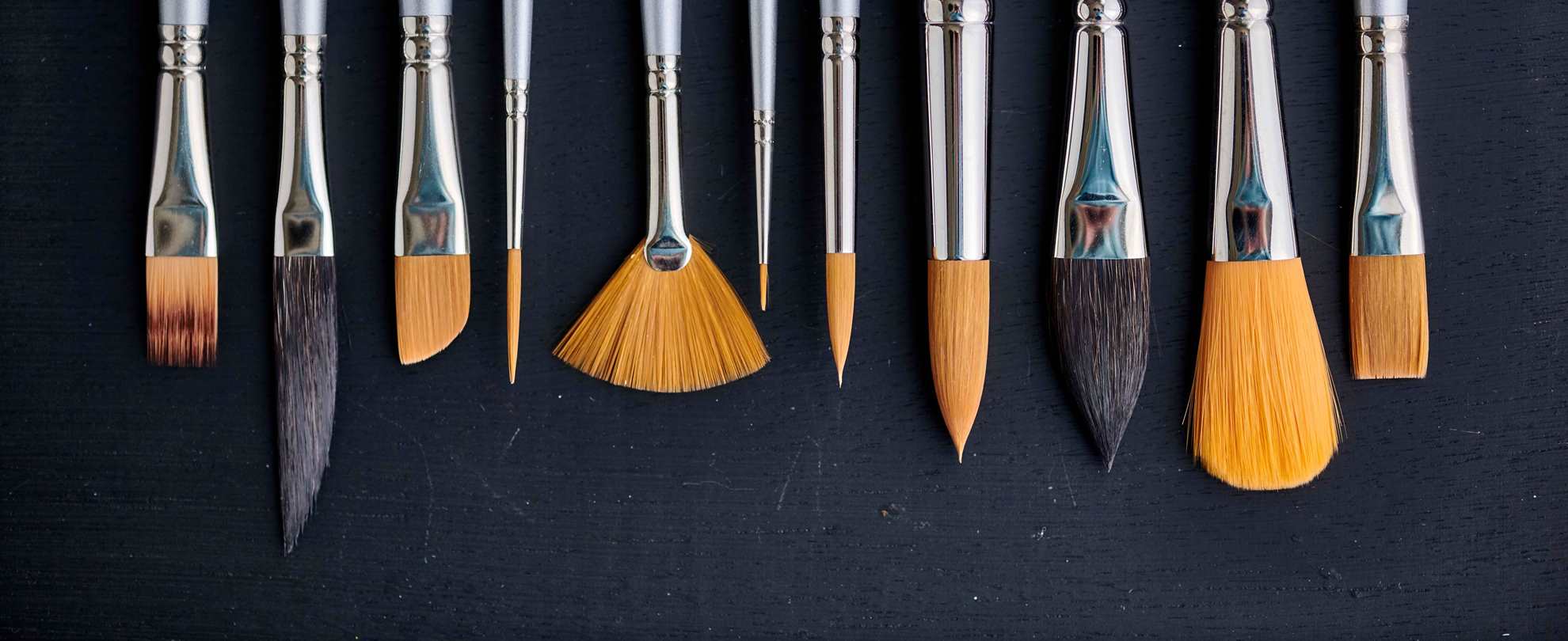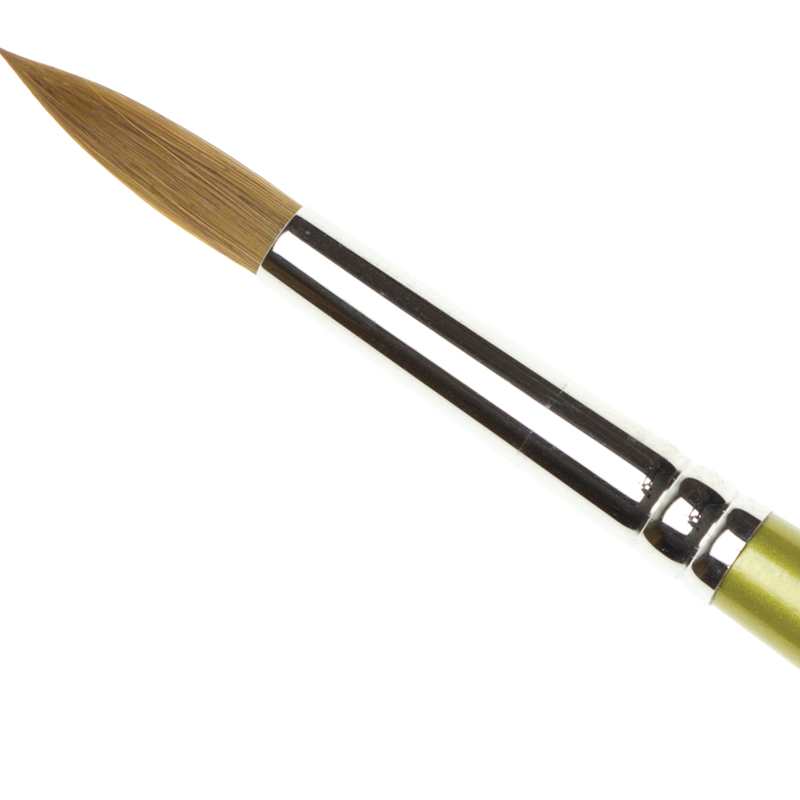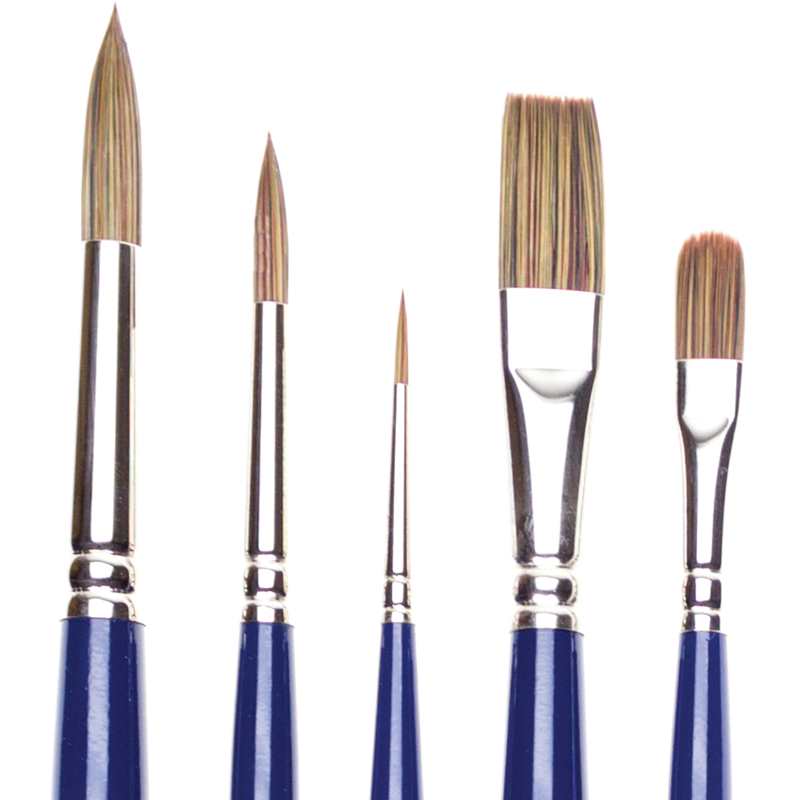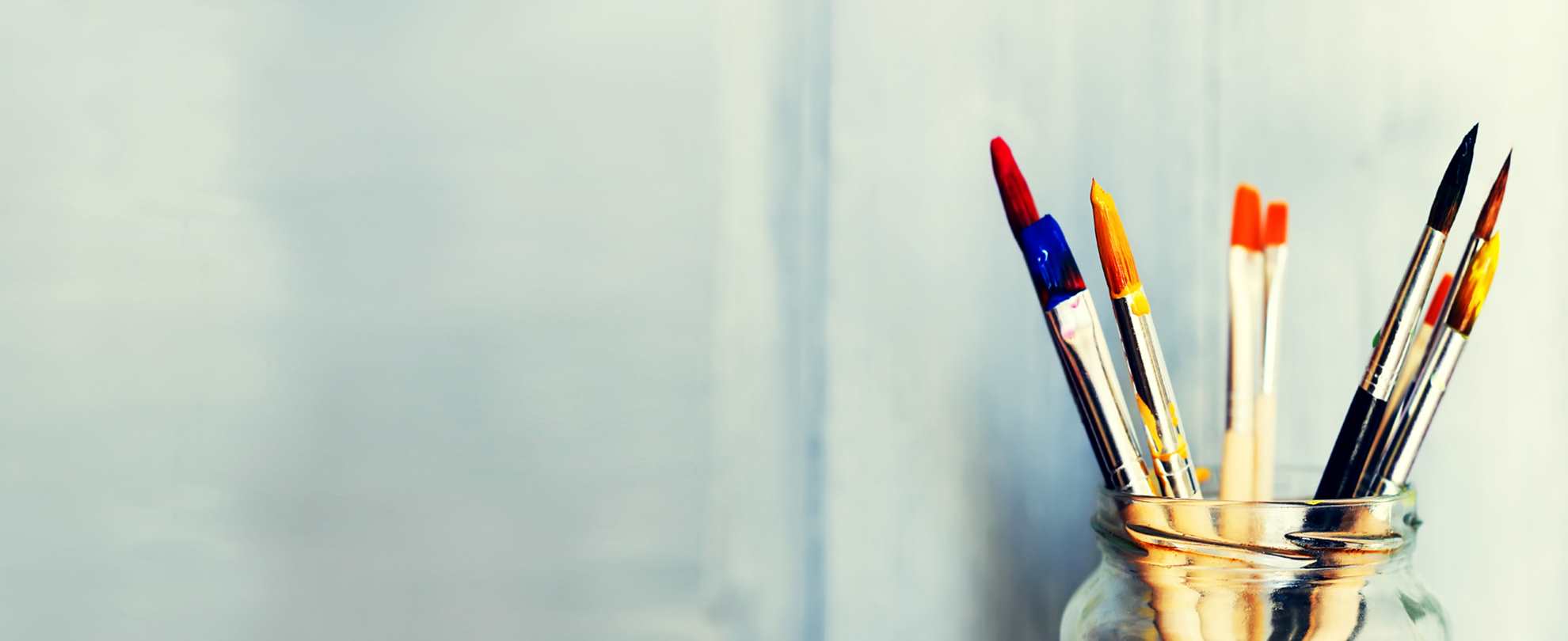
Buying the best paintbrushes for artists - what you need to know!
A good brush should last many years or even a lifetime and will become a faithful companion through your artistic journey. The choice of brush is determined by personal preference and the painting techniques you wish to employ, so which artist paintbrush should you spend your hard-earned cash on?
Top 5 things to consider when choosing a paintbrush for your art:
- Medium – What’s the best brush for the medium being used
- Shape – Starting out with round or exploring exciting new shapes and mark making.
- Size – Small for detail or larger for all round versatility
- Hair Type – Natural or Synthetic
- Cost – The best you can afford
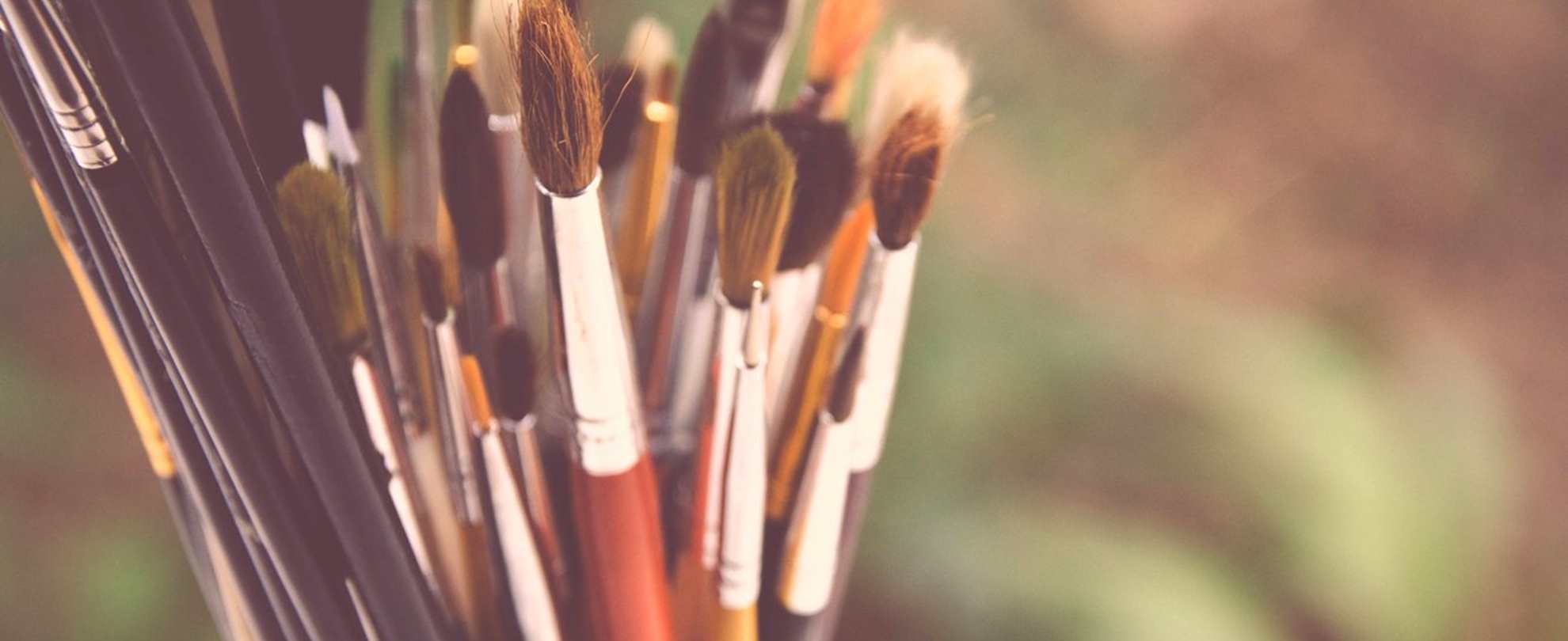
Medium
The first consideration when buying a brush is which medium it will be used for. Typically speaking you’d use bristle brushes for oil painting, synthetic brushes for acrylics and soft natural hair for watercolours, however improvements in manufacturing processes has blurred these assumptions as better quality synthetic brushes are now able to mimic the qualities of their natural haired counterparts.
-
To create soft washes of colour on the surface of watercolour paper, a soft brush is often used, either natural or synthetic hair. Watercolour brushes tend to come in a range of sizes and shapes as well as a wide variety of hair types and price points available and are usually short-handled. You want your watercolour brush to be able to hold a lot of water, but to also offer you maximum control.
-
This is a very versatile water-based medium. Depending on your technique, you can use brushes suitable for oils as well as watercolour. They are available either short or long-handled. Acrylic dries very quickly to a tough impermeable finish, so cleaning your brushes immediately is a must. Acrylics are also usually painted on a rougher surface, like canvas, where a more durable brush is generally beneficial.
-
Generally for oils you would you use a stiff hog bristle brush- they’re stiff enough to survive the thickness of oil paint; the bristles contain ‘flags’ which increase the paint load of the brush; and they’re durable and can take a lot of rigorous usage considering the coarse surfaces oil paints are usually applied to. Softer natural or synthetic brushes can also be used for soft blending and fine detail. Oil brushes tend to be long handled for use at an easel.
-
Although you can used hog bristle brushes for water-mixable oils, you should consider whether you’ll be using Water-Mixable solvents or water during your painting process. If using water this can make the bristles soggy, and also damage them in the long term so they may not be the best option for you. Synthetic Hog brushes, like those in the Winsor & Newton Artisan range, have been specifically designed to perform like traditional hog bristles but can be used reliably with water.
-
A broad flat brush is best for applying the final varnish coat to a painting. Stiffer bristles can leave brush marks in the varnish so a softer haired brush is required for a smooth application. A bigger brush means you have fewer brush strokes over the area of the painting. Clean the brush immediately after use and keep the brush for varnishing use only.
Brush Shape
The next consideration when choosing which brush to buy is the shape. Brushes come in all shapes and sizes, from the humble round to the unusual rake, choose a shape which suits the artwork you’re creating.
If you’re just looking for an everyday workhorse artist paintbrush, the most common shapes are the round and the flat. They’re both versatile and can provide you with a variety of marks. If you’re just beginning your art journey, this is where you should begin. A lot of artists don’t bother with further shapes as you are able to make such a wide variety of shapes with these brushes alone, just by varying your pressure or the position of the brush.
If you’re looking for something specific when buying your new artists paintbrush, you can read our brush shapes page for an overview of the different shapes and their applications to help you choose.

Brush Size
It may seem counterintuitive but often a bigger brush can offer greater control and even coverage that a smaller brush cannot. Smaller brushes are more suitable for adding delicate details, but if you want to apply colour quickly and evenly, a large brush will hold more colour and mean that you will not have to apply lots of brush strokes. Even large brushes can achieve small details by using very little pressure and the fine point of the brush.
Round brushes are often number, these can range from 10/0 – a micro detail brush – through to a very large size 40. The larger the number the bigger the brush. Flat brushes are usually described by the width of the brush, such as ½ inch or 1inch, and are measured across the flattened ferrule often in inches or millimetres eg 25mm = 1”.
There is no common standard for the sizes of brushes and a round size 10 may vary from one manufacturer to another. However, a size 10 is a good all-round brush, but you may want to add smaller and larger sizes for greater flexibility and handling.
Another size-related consideration when choosing which artist brush to buy is the length of the handle. Generally speaking, watercolour brushes have short handles and oil or acrylic brushes tend to be long-handled. Historically, oil and acrylic artists would place their canvas on a vertical easel and they would stand away, their long-handled brushes keeping their hands from touching the wet surface. Find the brush that works for you however, short-handled brushes offer great control and detail, so assess your art style and consider which would be most advantageous to your artwork.
Hair Type
There is a wide range of different hair types and mixes, from synthetic to animal hair, it can be overwhelming trying to decide which would be most suitable for your work. Luckily however, these days it’s easy to find an artists’ quality brush that aligns with your price point and your ethical values.
To help distinguish the varieties we will discuss the SAA own brand watercolour brushes:
Silver: Fully synthetic, very economical. Tend to be firmer than natural hair, hold their point well.
Gold: Synthetic/Natural mix, a less expensive alternative to sable combining the properties of both – the absorbency from the natural hair with the longevity and economy of the synthetic.
Imitation Sable: Fully synthetic but manufactured to mimic the qualities of a sable/natural brush.
Sable: Kolinsky Sable hair, most expensive, made from soft, natural hair from the tails of Siberian Weasels known as Kolinskis. Highly flexible, absorbent, comes to a brilliant point.
Watercolour purists would tell you that there is no better brush than a Kolinsky Sable brush. However, the hair is harvested from the tails of the animal, a byproduct of the fur trade. As the world moves away from fur and people are insisting on accountability, there are less Kolinskis being caught and therefore less hair to create the brushes. Making an already expensive brush, more difficult to obtain.
Luckily synthetic brushes have come a long way in recent years and you can get imitation sable brushes which mimic the qualities of the natural equivalent at a much cheaper (and more ethically sound) cost.
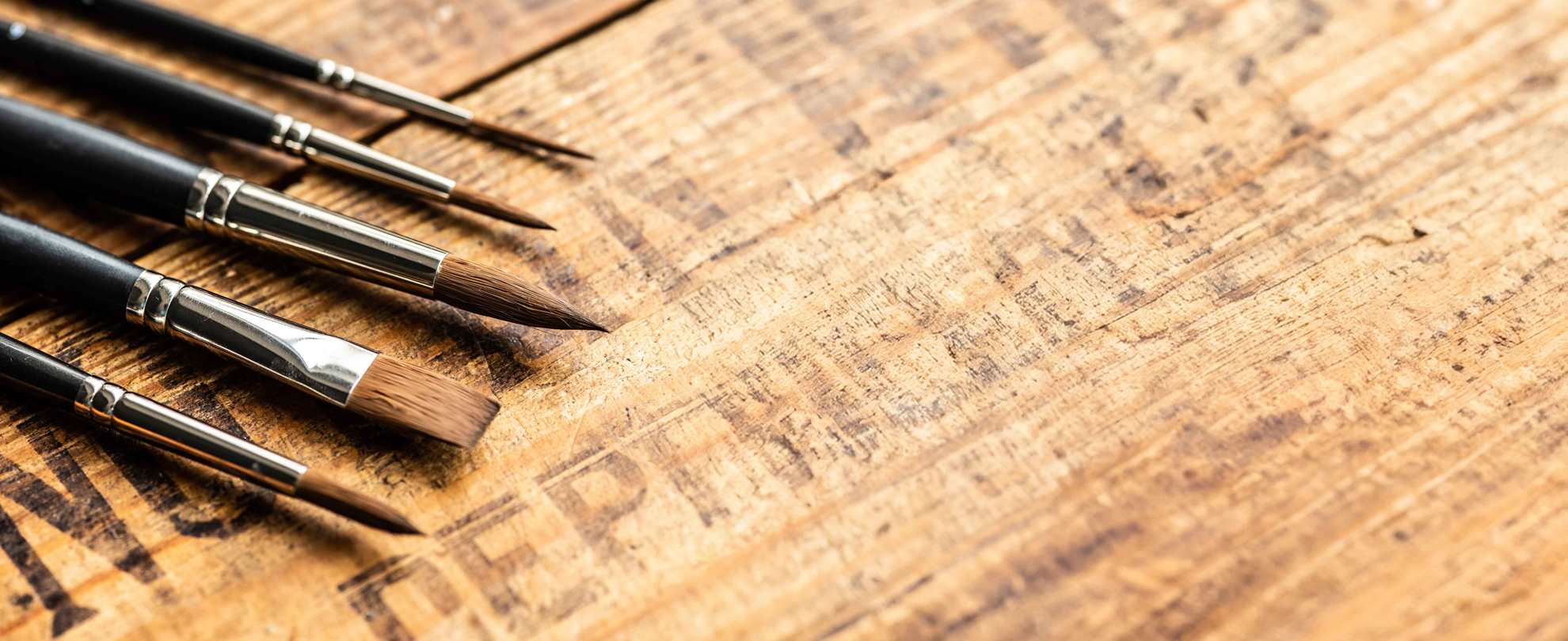
Cost
A good workman never blames their tools, as they say, but a good quality brush does make a great deal of difference when it comes to applying paint to a surface.
Remember when choosing which artist paintbrushes to buy, you do not need all the brushes from the outset. As a starting point we would suggest purchasing a large, medium and small round brush, plus a flat - these will serve you well and are enough to explore your chosen medium. Try purchasing the best quality you can afford and gradually add to your collection over time.
As with any tool you will need to practice in order to find the type or size of brush which works best for your techniques.
